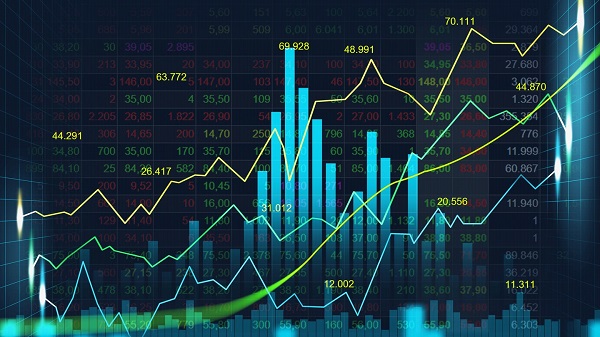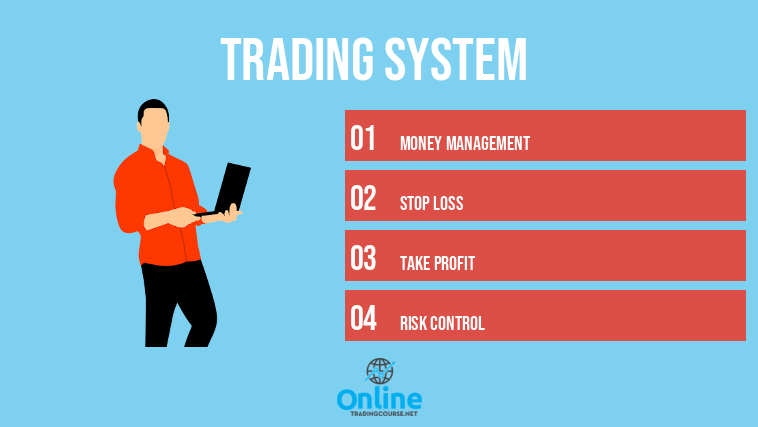
Trading System: how it works [Best 2021]
In this guide we explain in detail what a Trading System is and how it works. Following a trading system is essential for those who want to avoid trading errors and, in fact, it is not even as difficult as some think.
In this article we will also clarify the concepts of trading system and automatic trading: they are often confused but actually these terms are not synonymous.
We will also present in depth the eToro platform that allows you to invest fully automatically. How? By copying, thanks to patented software, the operations of the best investors in the world. You can sign up for free on eToro by clicking here.
Index
Trading System, what is it
What is a trading system? We can define it as a system of rules for making correct trading decisions. Basically, the trading system tells the trader what to do when certain conditions are met.
Obviously if the trading system is implemented with a robot (for example MQL program for Metatrader platform) then it will also be an automatic trading system. If, on the other hand, the trader will execute the operations directly, following the rules of the trading system, we cannot speak of automatic trading.
There are obviously some extremely efficient forms of automatic trading, for example automatically copying the best traders in the world with eToro.
What are the main elements of a trading system? If we refer to the case of retail traders (traders who operate with small capital directly from home) the two main elements are:
- Stop Loss
- Take Profit
- Money Management
Stop Loss
Stop Loss is a precise indication to close a transaction when a certain level of losses is reached. Thanks to stop losses it is actually possible to mathematically control trading losses.
All the best online trading platforms allow you to set stop losses in a simple and effective way. If the transaction reaches the maximum loss, it is closed automatically.
In theory, the stop loss could also be performed by hand, with the closing of the operation. But be careful: only market maker brokers guarantee that stop losses are always executed and at the right time.
The reason why a trading system should always consider stop losses is obvious: they allow you to block losses and preserve capital even in the event that the worst possible situation occurs.
Unfortunately, novice traders often ignore this opportunity completely, which is why we always recommend studying this trading course (click here for free registration) before starting to trade.
Read also: Panic Selling.
Take Profit
A Take Profit is an indication to the trading platform to close an operation that has reached a maximum profit level.
What is the advantage of such a decision? There is a proverb that says “grasp all, lose all”. This proverb is also valid in online trading: for example, if a stock has already risen a lot, it is better to collect profits and not risk its price collapsing.
Among other things, the take profits of other traders will most likely also be triggered and excess sales could bring the price down.
Money Management
We put money management in the third position on our list but it is so important that it may well deserve the first position.
The concept of Money Management is simple: it is a strategic approach that allows you to further limit trading risk. Let’s see how.
Trading always involves risk. These risks can be limited at will with stop losses but cannot be completely canceled. This is why it is convenient to divide the available capital into small shares and then use these shares on each operation.
Beginners, for example, are advised to use a maximum of 5% of the entire capital on an operation, even if this seems absolutely safe.
The advantage of basing operations on rigorous money management is evident: even if mistakes are made, the impact on the overall capital is almost zero (or very limited).
The other elements of a Trading System
So far we have considered the very fundamental elements of each trading system. Obviously the system of rules can be enriched, for example by taking into account the main trading indicators.
In this case, for example, there will be rules that will indicate what to do, when and in what quantities based on the behavior of certain indicators.
There is no limit to the complexity of a trading system but, at least at the beginning, it is possible to obtain excellent results even without complicating life too much.
The (real) advantage of Trading System
Many novice traders vaguely think that using a trading system can guarantee very high profits thanks to some miraculous advantage. The reality is not this: there is no miracle in the trading system.
The real advantage of a trading system is the ability to more securely control emotions.
When trading online, you are afraid of losing money (the risk is there) and you want to earn more and more greed.
Following these emotions could involve higher risks and in this a trading system can help a lot.
Let’s take a concrete example, if you respect the money management. If our trading system provides that we can only invest 5% on a single operation, the losses in case things go wrong would be very limited (also because a stop loss must still be applied).
If you don’t follow the rule, unpleasant situations could happen. For example, a novice trader might decide to invest 100% of his capital on a single trade because he thinks you know it’s safe.
The problem is that in trading nothing is 100% sure: the beginner in the example could suffer heavy losses if, for example, there is an unexpected event that suddenly changes the market trend.
Those who follow the trading system mechanically avoid these errors and, therefore, the painful consequences.
Trading System and Automated Trading
It is clear that a trading system can be executed automatically, thus ensuring the possibility of completely avoiding this type of emotional error.
However, automatic trading is something bigger. Let’s consider, for example, the best automatic trading system, one of those that works best: eToro.
eToro is an online trading platform that allows you to copy, in a completely automatic way, what the best traders in the world do.
Many novice traders use eToro for this very reason: they just have to select the best traders to copy, the ones who have achieved the best results in the past (minimum risk and maximum profit).
They can do it easily thanks to an internal search engine. Once the traders to be copied have been selected, the software will automatically replicate all the operations made by these great experienced traders in real time.
Incidentally, watching what the best traders in the world are doing live is also an excellent way to really learn online trading.
You can sign up for free on eToro by clicking hereCreate your trading system in 10 steps
Most new traders start learning other traders’ trading strategies. Many started their trading careers this way. Many traders wonder how they can get started with their own trading strategy?
- The good news: Creating your first trading strategy is easy.
- The bad news: Creating a profitable trading strategy is difficult.
Start with the right expectations. Creating a trading strategy is easy. Learn some trading tools and indicators and you will be ready to do it. However, it is unrealistic to think that your first trading strategy will make you rich.
Other traders can share their tools and approaches. But no trader can or will guarantee profits. Each trader is different. Hence, you can only benefit from creating your own personal approach to financial investing.
The best and most sustainable approach is to develop your trading strategy, perhaps taking a cue from someone else, but your personal elements really need to be there.
Follow these 10 steps to form your first trading strategy:
1 – SET YOUR MARKET IDEOLOGY
Before you start creating your trading strategy, you need to develop an idea of how the market works. The most important thing is to answer this question.
Why do you think you can make money on the markets?
Forming your own market ideology is possible by reading a lot. Read on both technical and fundamental analysis. Avoid having “I want to get rich now” thoughts. Think about the laws of supply and demand.
He doubts the theories that hold that people and markets are perfectly rational. Your ideology will define each step that follows. Give it the attention it deserves. In any case, we urge you to follow a principle in your first trading strategy: keep it as simple as possible.
Better not to be overwhelmed by a complex strategy from the start. Furthermore, a trading strategy with multiple moving parts is more difficult to manage and improve.
2 – CHOOSE A MARKET FOR YOUR TRADING STRATEGY
Forex? Stocks? Options? Futures?
If you choose to trade forex, you need to understand what you are buying and selling. Make sure you know the different forex brokers by heart. You need to know how the margin is calculated.
Or, if you choose to trade stocks, you need to know what “stock” means. You need to know the difference between a blue-chip stock and a penny stock.
The point is that there is a lot to learn about each market. But you can’t start learning in depth until you choose your trading market.
While futures trading is recommended for intraday traders, the choice is yours. The only rule is that you must understand the market where you choose to trade.
3 – CHOOSE A TIME FRAME FOR TRADING
Before gaining trading experience, it is difficult to decide on an ideal time frame. Until you have chosen your time frame you will not know if you are more suited to fast scalping or daily swing trading.
Why should you trade with the 5 minute time frame or daily charts? This is a question that needs to be answered. After that, you can start considering your circumstances. If you have time to analyze the market for extended periods, try intraday trading.
When trading with fast time frames, you get fast feedback to shorten your learning time. Even if you end up trading with longer time frames, what you learn from intraday price action will still be useful.
Of course, if you are unable to analyze the market for extended periods, start with the 4H charts. With sustained effort, you can learn enough to decide if swing trading is for you.
4 – CHOOSE A TOOL TO DETERMINE THE TREND
You don’t trade when you see a trend ending. You trade when the market is growing, and you use a trend line to start trading.
You do not trade when you see a market side phase. You trade when you judge that the market is trending and then you can look for the right entry signals.
Decide on a tool that helps you judge the market environment. You can choose tools that help understand the price action such as pivot points and trend lines. You can also use technical indicators such as moving averages and MACD. Very simple to use.
5 – DEFINE YOUR ENTRY TRIGGER
Even with the right market environment, an objective entry trigger is needed. It will help you enter the market without hesitation. A trigger is a market entry signal.
Both the bar and candlestick pattern are charts that can generate useful triggers. If you prefer indicators, oscillators such as the RSI and the Stochastic are also good options.
6 – PLAN THE EXIT
You have to plan how to get out of the market when things go wrong. The market can go against you, causing you losses that are beyond your imagination. Having a stop-loss is essential.
Learn how to set a stop-loss here.
You also need to plan how to get out when things go right. The market won’t go in your favor forever. So, you need to know when to take the profits.
7 – DEFINE YOUR RISK
Once the entry and exit rules have been resolved, you can work to limit the risks.
The primary way to do this is by sizing the location. For a given trading setup, the size of your position determines the amount of money you are putting on the risk line.
Double the size of the position and you will double the risk. Look carefully at the size of the position to avoid over-exposing yourself.
8 – WRITE YOUR TRADING RULES
At this stage, your trading strategy is simple. You may be able to memorize the trading rules. However, you still have to write the trading rules down somewhere.
Having a written trading plan is a solid way to ensure discipline and consistency.
It also provides a record of your trading strategy. You will find this useful when you are trying to perfect it.
9 – VERIFY YOUR TRADING STRATEGY
With your rules written, you can now backtest the strategy.
If you have a discretionary trading strategy, backtesting can be a difficult process. It is necessary to reproduce the action of the market price and manually record your operations.
If you have a mechanical trading strategy and a coding background, you can accelerate this phase. However, looking at the trades one by one is a great way to develop your market instinct. This way you can also think about how to improve the trading strategy.
10 – PLAN HOW TO IMPROVE YOUR TRADING STRATEGY
Your first trading strategy will not be profitable. But that’s okay. The trading strategy is a living object. It is not static.
With your growing experience and knowledge, the strategy will improve. But let’s not leave this to chance. Plan how you will get feedback and improve.
Test the trading system in advance. Plan to take good notes on your market observations. Record trades and keep chart images in good order. Avoid drastic changes to your trading strategy.
For this last step (which could take forever), remember that the goal is to achieve a positive expectation with each operation. Not positive profits for every trade.
Let the statistics work for you. Don’t force your will on the market.

Conclusions
Using a trading system is a smart way to avoid being swayed by emotions when trading online, thus avoiding making painful mistakes.
Those who are just starting out have the option of automatic trading. In this case, we point out that one of the best platforms is eToro which allows you to automatically copy what the best traders in the world do.
It is a well-defined methodology for implementing a trading strategy.
Studying the market where you are going to operate and practicing on a Demo account.
Yes, however it is always necessary to monitor and implement the data and parameters. Winning strategies always and in any case do not exist.
Starting from a Demo account and working with virtual money to do all the necessary tests.
